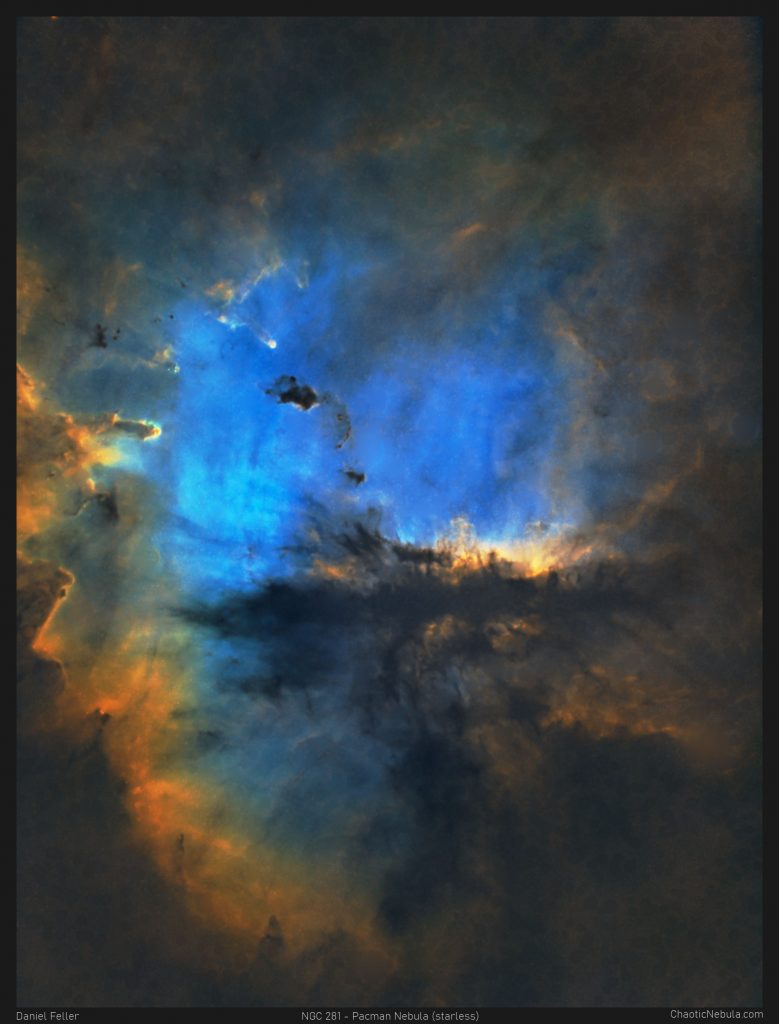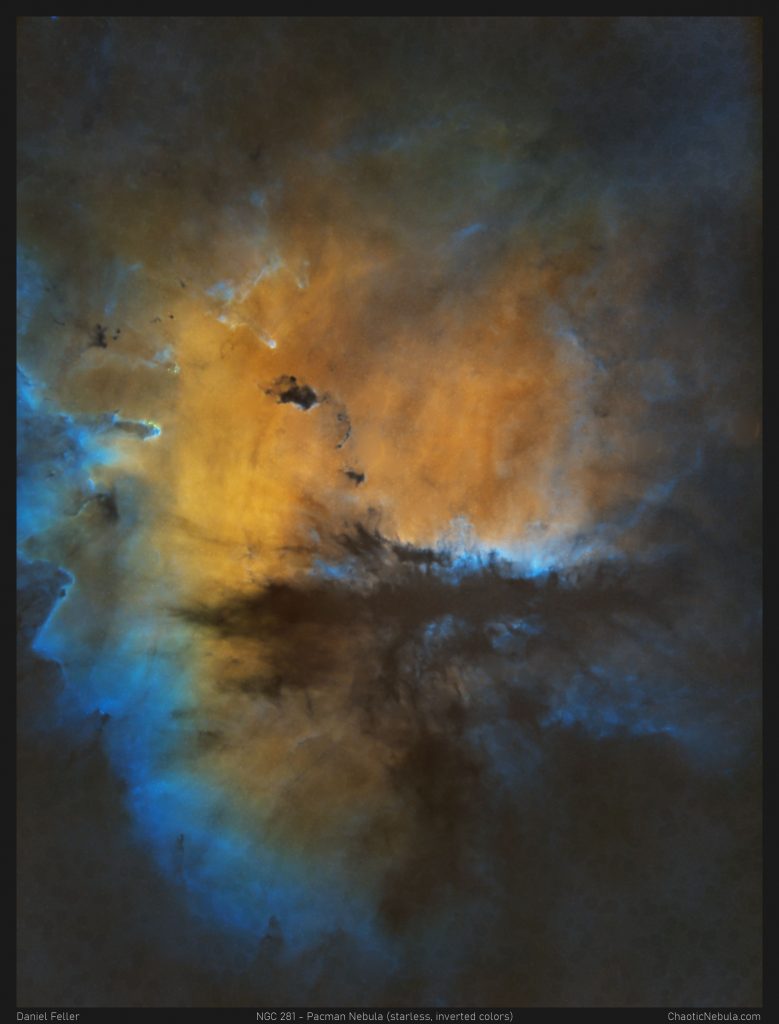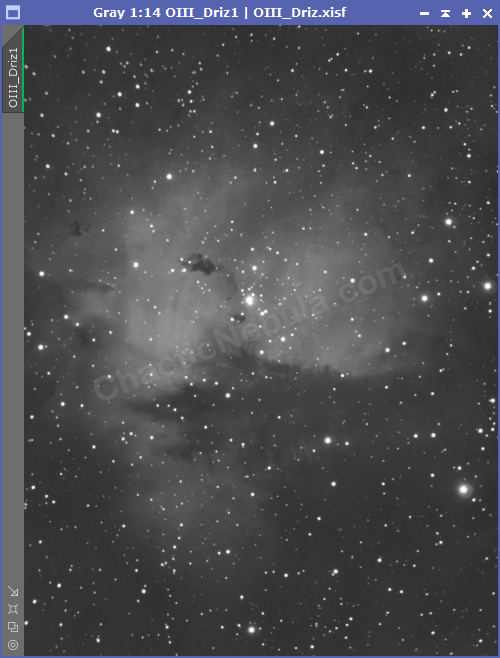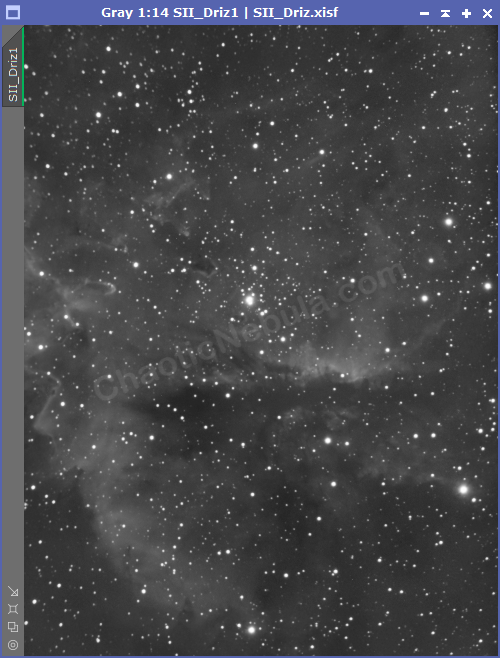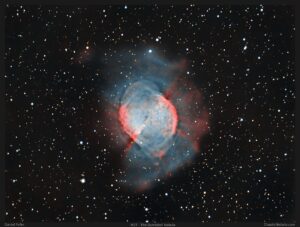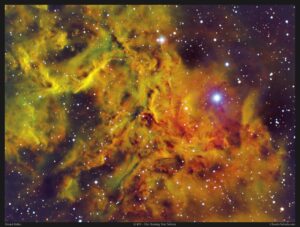The Pacman Nebula is something I’ve been wanting to image for quite some time. Mostly because it looks like what it is called… Pacman. NGC 281 is a very bright emission nebula in Cassiopeia only 9,200 light years away. Emission nebulas emit light due to ionized gases within the cloud.
To date, this is the longest image I’ve ever captured, coming in at 30 hours of imaging time! And more amazingly, I’ve had 9 nights of clear skies over the course of about 3 weeks. It usually would take 1-2 months to get this amount of imaging time.
Imaging Details
- Workflow: Narrowband
- Sulfur-II: 60*600 seconds
- Hydrogen-Alpha: 60*600 seconds
- Oxygen-III: 60*600 seconds
- Binning: 1×1
- Color: SHO
- Red: Sulphur-II
- Green: Hydrogen-Alpha
- Blue: Oxygen-III
- Total Imaging Time: 30 hours
- Imaging Dates: (9 nights)
- 8/31/2021
- 9/5/2021
- 9/7/2021
- 9/8/2021
- 9/9/2021
- 9/12/2021
- 9/14/2021
- 9/17/2021
- 9/21/2021
Starless Option
Of course stars are part astrophotos, but the details of the object stand out much more when the stars are reduced or completely eliminated. I’ve been using my updated star removal process with StarNet to generate the following image.
Colorization Option
The standard colorization of narrowband images is the Hubble Pallet, refereed to as SHO (Sulphur = Red, Hydrogen = Green, and Oxygen = Blue). However, by flipping this around, with the inverse OHS (Oxygen = Red, Hydrogen = Green, and Sulphur = Blue), this image looks much more like Pacman.
Location
From northern latitudes, The Pacman Nebula is located very high in the sky, making it an ideal target to image. Ideally, those looking to image the Pacman Nebula should plan for the months of September through December. During that time, the nebula appears highest from the horizon.

Imaging Notes
Some quick tips about imaging The Pelican Nebula
- Data: This is the second image I’ve done where I did 10 hours per filter and the results are amazing. I’m thinking a good guideline for astrophotography is to focus on gathering more data on a fewer number of targets.
- A Light Touch: With 30 hours of data for the image, the image processing workflow is much easier because the images have a strong signal. I’m able to apply smaller corrections on the images, resulting in a more pleasing and natural final image.
- Star Removal: I continued to remove stars in the linear phase of the image processing workflow. After deconvolution, I ran the star removal process using Starnet.
- Sulphur-II: There is a moderate SII signal in the Pacman Nebula. In order to capture enough signal, thereby helping to reduce noise, I captured 10 hours worth of data (60 images at 10 minutes each). The final, integrated Sulphur-II image had some noise that was easily remove with a few noise reduction processes in my narrowband workflow.
- Oxygen-III: There is a decent OIII signal in the Pacman Nebula. Because this filter will help the nice blue area, it is advisable to take a lot of OIII images to help reduce noise. This image, just like Sulphur, was comprised of 10 hours of data.

